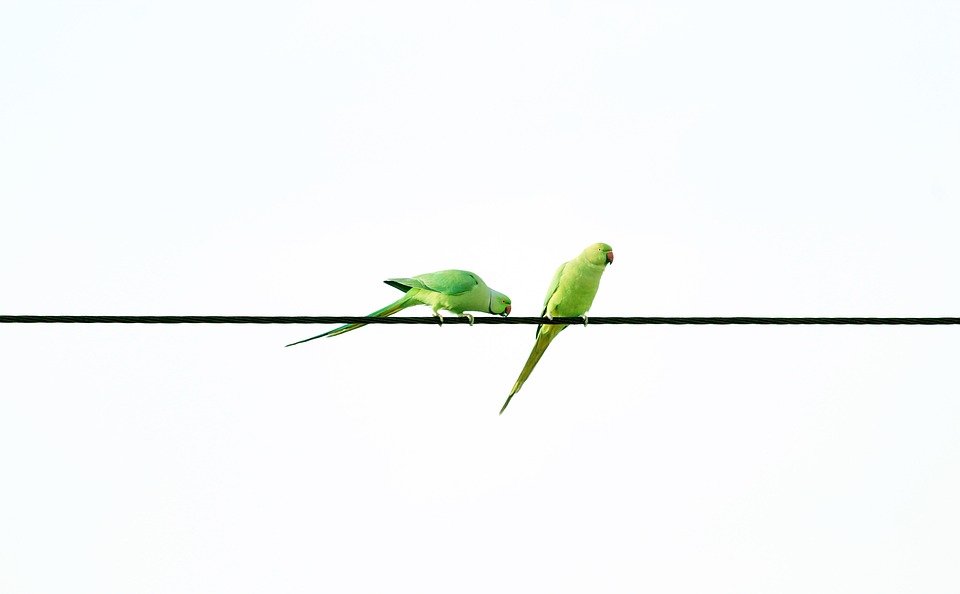Heading: Parrot Behavior: How to Recognize Signs of Stress During Travel and Provide Comfort
Introduction:
Traveling with our beloved parrots can be an exciting adventure, but it’s essential to be aware of their behavior and ensure their comfort during the journey. Stress can adversely affect parrots, leading to health issues and behavioral problems. In this article, we will discuss how to recognize signs of stress during travel and provide comfort to our feathered friends.
Recognizing Signs of Stress in Parrots:
1. Vocalization Changes: Pay attention to any significant changes in your parrot’s vocalizations. Increased screaming, excessive squawking, or unusual silence can be indicators of stress.
2. Feather Picking or Plucking: Stress often manifests in parrots through feather picking or plucking. Observe if your parrot starts excessively preening or damaging its feathers during travel.
3. Aggression or Fearful Behavior: Parrots may become aggressive or display fearful behavior when stressed. Watch for sudden aggression towards you or other birds, biting, or excessive cowering.
4. Loss of Appetite or Overeating: Stress can disrupt a parrot’s eating patterns. They may either lose their appetite or resort to overeating excessively. Monitor any changes in their food consumption during travel.
5. Excessive Body Movement: Restlessness, pacing, or excessive body movement can be signs of stress. Observe if your parrot displays these behaviors in the travel carrier or when in transit.
Providing Comfort to Stressed Parrots:
1. Familiarize with the Travel Carrier: Introduce your parrot to the travel carrier well in advance of the journey. Let them explore and become comfortable with the carrier’s environment.
2. Maintain a Calm Environment: Ensure a peaceful and calming ambiance around your parrot during travel. Avoid loud noises, sudden movements, or any other stress-inducing factors.
3. Cover the Carrier: Covering the travel carrier partially or fully can help reduce visual stimuli, creating a sense of security for your parrot. Make sure it still allows sufficient airflow.
4. Maintain Consistent Temperature and Humidity: Parrots are sensitive to temperature and humidity changes. Keep the carrier in a well-ventilated area, ensuring it is neither too hot nor too cold.
5. Provide Familiar Toys and Comfort Items: Place familiar toys, perches, or blankets inside the carrier. These items can provide a sense of security and familiarity to your parrot during travel.
FAQs:
1. Q: Can sedatives or tranquilizers be used to calm stressed parrots during travel?
– A: It is not recommended to use sedatives or tranquilizers without consulting an avian veterinarian. These substances can have adverse effects on parrots and should only be used under professional guidance.
2. Q: How long can parrots safely stay in a travel carrier during a journey?
– A: The duration of parrot confinement in a travel carrier should be minimized as much as possible. While short trips may be tolerable, it is ideal to provide regular breaks for your parrot to stretch its wings and relax.
3. Q: How can I reduce stress during long-distance travel with my parrot?
– A: Long-distance travel can be stressful for parrots. Ensure they have a spacious carrier, maintain a comfortable temperature, provide regular breaks, and offer treats and positive reinforcement to keep them calm.
4. Q: Are there any specific dietary considerations during travel to reduce stress?
– A: It’s essential to maintain a consistent and balanced diet for your parrot during travel. Pack their regular food and treats, ensuring they have access to fresh water at all times. Avoid sudden dietary changes, as it can cause further stress.
Conclusion:
Recognizing signs of stress in parrots during travel is crucial for their well-being. By understanding their behavior and providing comfort through familiar surroundings, a calm environment, and appropriate care, we can ensure a safe and stress-free journey for our feathered companions. Always consult with an avian veterinarian for personalized advice on traveling with your parrot.









